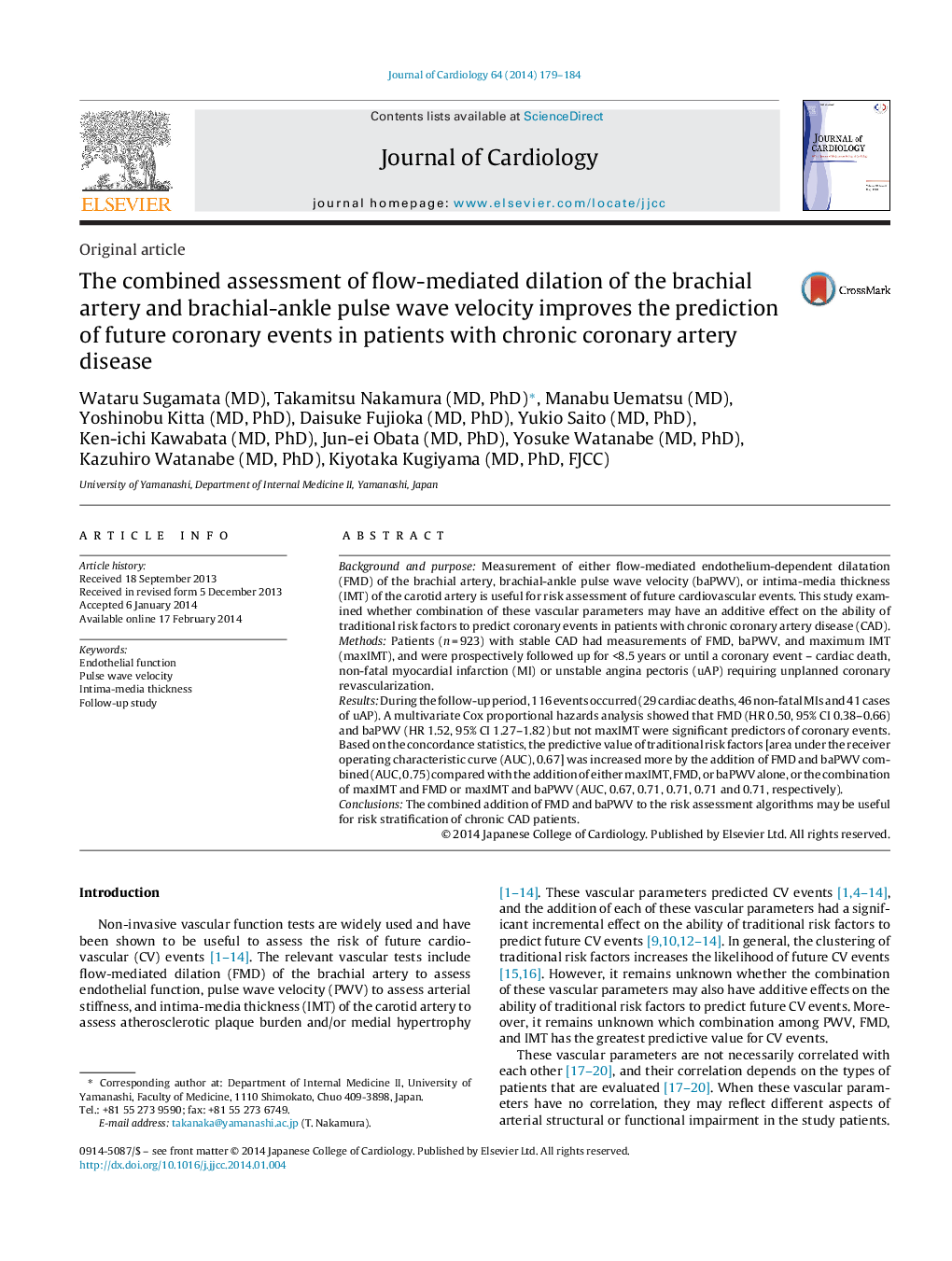| کد مقاله | کد نشریه | سال انتشار | مقاله انگلیسی | نسخه تمام متن |
|---|---|---|---|---|
| 5984083 | 1178525 | 2014 | 6 صفحه PDF | دانلود رایگان |
Background and purposeMeasurement of either flow-mediated endothelium-dependent dilatation (FMD) of the brachial artery, brachial-ankle pulse wave velocity (baPWV), or intima-media thickness (IMT) of the carotid artery is useful for risk assessment of future cardiovascular events. This study examined whether combination of these vascular parameters may have an additive effect on the ability of traditional risk factors to predict coronary events in patients with chronic coronary artery disease (CAD).MethodsPatients (n = 923) with stable CAD had measurements of FMD, baPWV, and maximum IMT (maxIMT), and were prospectively followed up for <8.5 years or until a coronary event - cardiac death, non-fatal myocardial infarction (MI) or unstable angina pectoris (uAP) requiring unplanned coronary revascularization.ResultsDuring the follow-up period, 116 events occurred (29 cardiac deaths, 46 non-fatal MIs and 41 cases of uAP). A multivariate Cox proportional hazards analysis showed that FMD (HR 0.50, 95% CI 0.38-0.66) and baPWV (HR 1.52, 95% CI 1.27-1.82) but not maxIMT were significant predictors of coronary events. Based on the concordance statistics, the predictive value of traditional risk factors [area under the receiver operating characteristic curve (AUC), 0.67] was increased more by the addition of FMD and baPWV combined (AUC, 0.75) compared with the addition of either maxIMT, FMD, or baPWV alone, or the combination of maxIMT and FMD or maxIMT and baPWV (AUC, 0.67, 0.71, 0.71, 0.71 and 0.71, respectively).ConclusionsThe combined addition of FMD and baPWV to the risk assessment algorithms may be useful for risk stratification of chronic CAD patients.
Journal: Journal of Cardiology - Volume 64, Issue 3, September 2014, Pages 179-184
